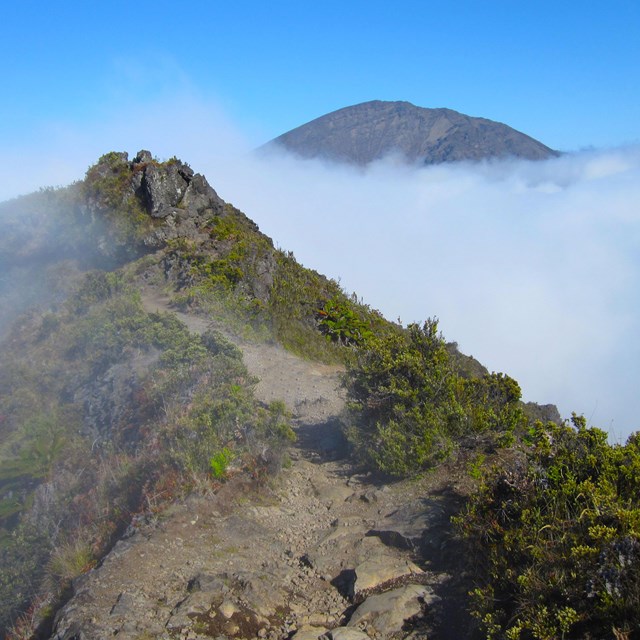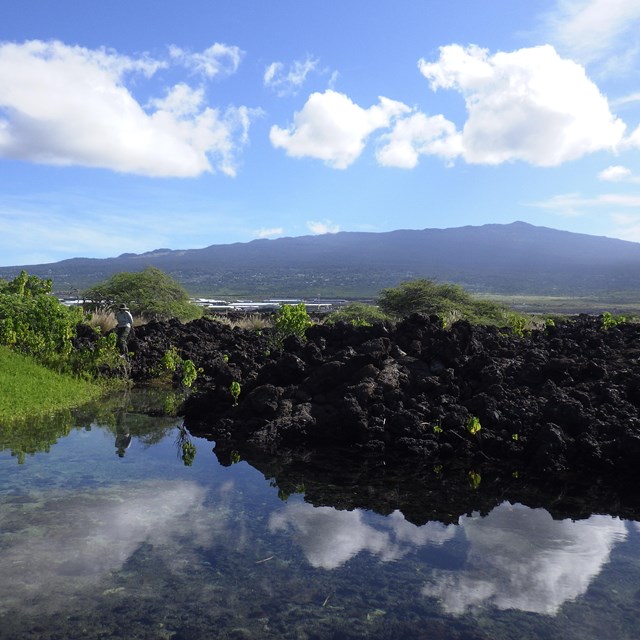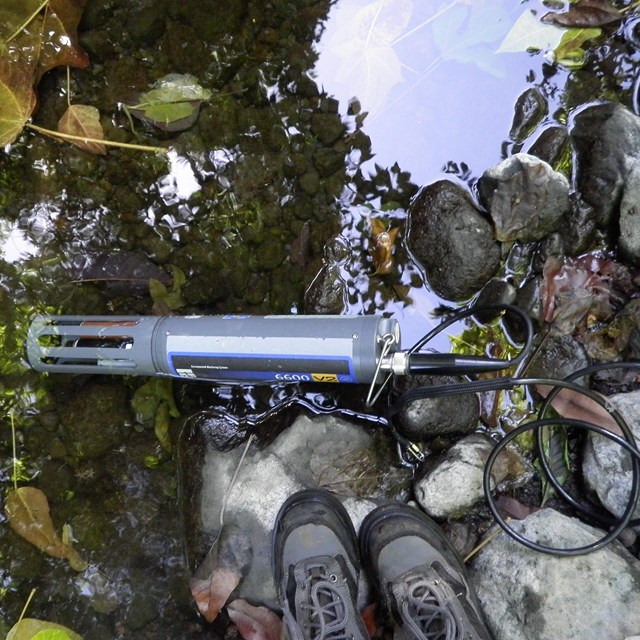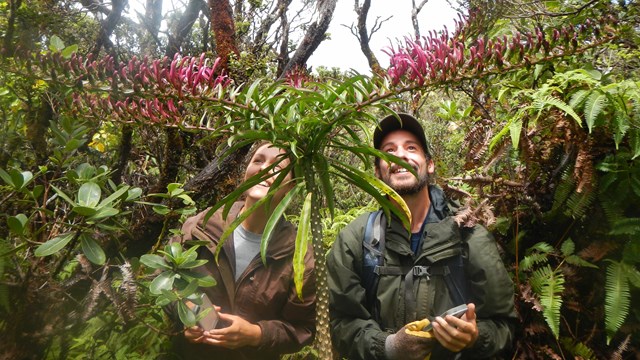
NPS Photo/K. Weisenborn
Pu‘ukoholā Heiau National Historic Site is located on one of the driest places in the Hawaiian Islands, the northwest coast of the island of Hawaiʻi. King Kamehameha the Great's heiau, or temple, dominates the coastline, scattered coastal trees and grasses cover much of the landscape, and a small freshwater oasis juts into the waters of Pelekane Bay.
The park holds the state record for the lowest annual precipitation at 2.28 inches. Because of the desert climate, the diversity of flora and fauna is limited. Although many plant species within the park have been introduced since European contact, some trees such as the kukui date back to early Polynesian settlement.
Native flora found in this tropical desert include pili grass, milo, and ‘ilima. The only endemic terrestrial mammal in the islands, the ʻōpeʻapeʻa (Hawaiian hoary bat), is occasionally seen. Bird life in the park is usually limited to introduced species; however, migratory shore birds and the pueo (Hawaiian owl) can occasionally be seen. Mano paʻele (blacktip reef sharks) are often observed by park visitors, along with honu (green sea turtles), naiʻa (spinner dolphins), and koholā (humpback whales).
What's Monitored Here
-
 Climate
ClimateClimate is widely recognized as a major driver for both terrestrial and marine ecosystems
-
 Landscape Dynamics
Landscape DynamicsLandscape dynamics monitoring in parks provides information on land use and land cover change
-
 Water Quality - Fresh & Brackish
Water Quality - Fresh & BrackishFresh and brackish water quality monitoring occurs in places like streams and anchialine pools

PACN I&M Inventory and Monitoring Reports, Protocols, and Articles from Pu‘ukoholā Heiau National Historic Site

Discovering species in our parks
Last updated: September 12, 2024
